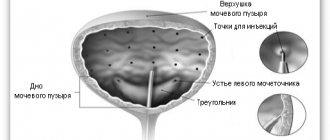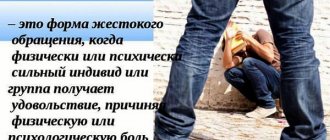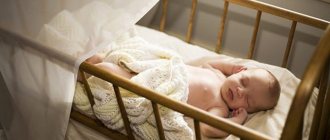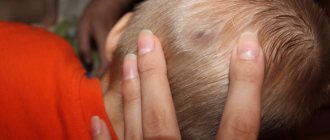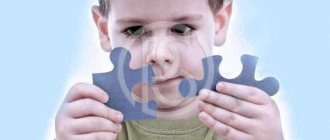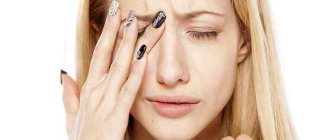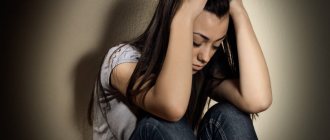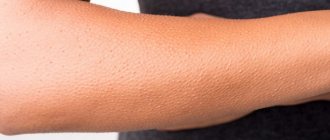Adolescence is a transitional period from childhood to adulthood. Teenagers are trying to change their lifestyle, are at home less often than before, and actively communicate with peers rather than with parents.
During adolescence, people develop hobbies (driving, discos, video games) and first sexual relationships. In an effort to conform to adults, adolescents often adopt the habits of adults (drink alcohol, try smoking, etc.) and become involved in risky behavior that differs from normal behavior.
Everyone, even completely healthy teenagers, experiences difficulties adapting to this new social status, but such difficulties can be aggravated if epilepsy is detected in teenagers.
All adolescents, from the point of view of diagnosed epilepsy, can be divided into the following 2 groups:
1) children whose first attacks of epilepsy began in childhood;
2) adolescents with primary diagnosed epilepsy.
Scary, but not always dangerous
Most parents experience childhood seizures, and often mothers and fathers are very frightened by what is happening. Meanwhile, convulsions do not necessarily mean mortal danger, and some are even common companions of growing up.
So, should we panic or not, and if we panic, then when? We decided to understand this issue with the help of Elena PARAMONOVA, a neurologist-epileptologist, founder, director and expert of the “Algorithm” center for epilepsy, paroxysmal conditions and sleep disorders.
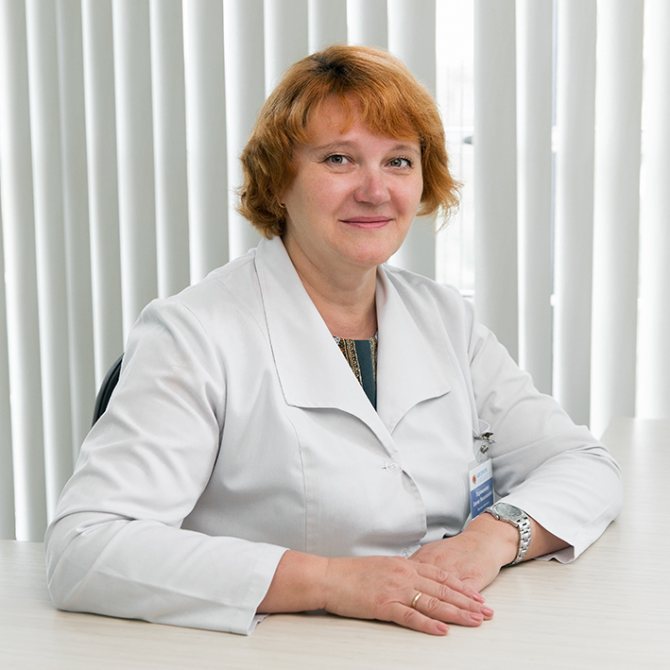
Our expert: Elena Nikolaevna PARAMONOVA
She graduated from the Novosibirsk State Medical Institute in 1986, specializing in the field of neurology since 1992. In 1995, she became the first epileptologist in Novosibirsk.
Today he is a neurologist-epileptologist of the highest qualification category. Director and chief physician.
First aid
The emergency care algorithm is quite simple. Parents must first call an ambulance and record the time of the onset of the attack. You will need to gather all your will into a fist and, while waiting for the doctors, notice all the details of what is happening to the child - what nature of the seizures are, with what frequency they are repeated, whether the baby reacts to external stimuli, whether he is conscious. All this information will be useful to the doctor to quickly make the right decision and to establish possible causes. If it is difficult to determine the nature of the seizures yourself, you can film what is happening and then show it to the doctor.
“Rolling up” when screaming and crying
— Elena Nikolaevna, what kind of seizures are typical for children?
— Very often parents are afraid of affective-respiratory attacks, simply “rolling up” when crying. In fact, these attacks look quite creepy - the child turns blue, falls, and bends over. Or there may also be pale fainting - often a reaction to pain, especially if you hit the back of your head, turned pale and fell. All parents are afraid of these conditions.
There are four types of affective respiratory attacks (ARAs).
The most common one is called simple ARP . Manifests itself in the form of holding the breath at the end of exhalation. Usually the result of frustration or trauma. There are no major changes in circulation or oxygenation and respiration occurs spontaneously.
Blue type . Typically caused by anger or frustration, although it can also be caused by pain. The child cries and makes a forced exhalation, sometimes there is cyanosis (blue color), loss of muscle tone and loss of consciousness. Most children regain consciousness, some fall asleep for an hour or two.
Pale type . The child turns pale (as opposed to the blue type) and loses consciousness; does not cry or cries a little.
Complicated type . It may simply be a more severe form of the previous two types. This type of attack begins as "blue" or "pale" and then develops into something like an epileptic seizure. The electroencephalogram outside the seizure is essentially normal.
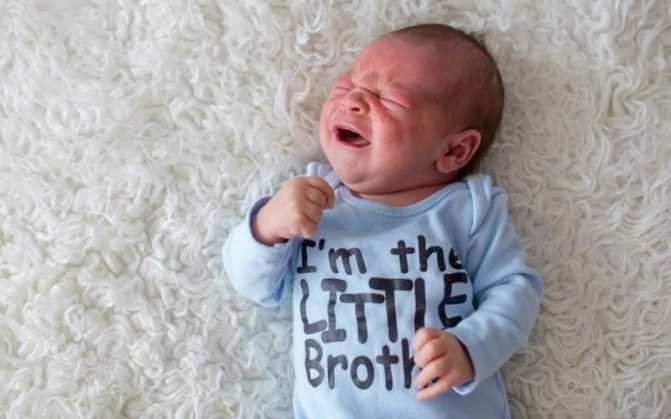
- What to do?
- First of all, down with fear! The child needs to be brought out of this state: you can splash cold water on his face, you can wash him, slap him on the bottom or cheek, you can shake him sharply and blow into his mouth. Sometimes it helps to take the child out into the cold air, bring him to an open window. Any influence designed for a reflex reaction helps.
- Why do such conditions arise?
- These conditions are hereditary. Often in the doctor’s office, when asked if this happened to someone close to them, adults begin to remember what, yes, happened to their brother, grandmother, sister...
— Such attacks last a lifetime?
- No no. These attacks disappear after five years. But, dear parents, keep in mind that much in this matter depends on you! In families where parents have thoroughly studied the issue, listened to the doctor’s advice, understood everything and are not afraid of anything, these conditions go away quite painlessly.
“But when parents react hysterically, the child may develop neurosis. It happens that sometimes children with affective-respiratory attacks realize that their parents are afraid of such conditions, and begin to simulate them, because our children are very smart creatures who can use any means to achieve a goal (laughs). Remember that a lot depends on how the parents behave.
How to recognize febrile muscle contractions and distinguish them from others
Convulsive reactions to high temperature are typical for 5% of children from birth to 6 years of age. Most often, parents of children under 3 years old encounter them. What do cramps look like when a child has a fever?
The baby suddenly stops crying, does not respond to external stimuli, even the sound of the mother’s voice, and loses contact with the outside world. Sometimes there is a short-term holding of breath, the skin acquires a bluish tint.
Often inexperienced parents mistake febrile spasms for an epileptic seizure. Typically, an attack caused by a high temperature lasts no longer than 15 minutes and stops on its own . It happens that convulsions occur in short series lasting 1-2 minutes. There is approximately a 30% chance that febrile spasms will recur with the next increase in temperature, therefore, in children prone to such a reaction, it is recommended to lower the temperature above 37.5 ºC.
Febrile seizures
—Children often have convulsions at elevated temperatures. Please tell us about them.
— There are typical febrile convulsions at a body temperature of 38.5 and above (this temperature is called febrile). They are characterized by the following signs:
firstly, age from one to five;
secondly, the duration is no longer than five minutes;
thirdly, these are generalized seizures (spread throughout the body), in other words, the child either “pulls” or “hits” the whole body.
” — 5% of the world's children are susceptible to such seizures, and only in 5% of these five such seizures can be the onset of epilepsy. The remaining 95% exceeded the age of five and entered adulthood as healthy people. Just keep in mind that their children can also exhibit such cramps.
— There are atypical febrile attacks. This is a much more dangerous condition. Contact your doctor immediately if you observe the following signs:
firstly, seizures begin before the age of one year (especially before 6 months!) or after five years;
secondly, body temperature 37.5;
thirdly, they are focal in nature, that is, a spasm passes through one half of the body, and the other is not involved.
These are very dangerous conditions because they indicate brain diseases - the occurrence of neoplasms or the development of structural temporal lobe epilepsy.
-Elena Nikolaevna, what diseases can trigger febrile seizures in children?
— Absolutely any, each person individually. Some people experience convulsions due to a sore throat, some due to pneumonia, some due to a rotavirus infection, or the flu. To be fair, it should be noted that even an adult can react to a temperature of 40 with the flu with a cramp.
Consequences
When febrile seizures occur, the prognosis in most cases is favorable - as the baby’s nervous system matures, the likelihood of a recurrence of the convulsive syndrome is minimal, but it is still necessary to try to prevent a significant increase in body temperature due to various diseases (viral infections, overheating).
But still, in 3-10% of cases, convulsive syndrome, which recurs after treatment of the underlying disease or periodically occurs in children after 3-4 years of age, is a sign of the development of epilepsy, including symptomatic, in the absence of effect from treatment of concomitant diseases.
Article read: 38
Seizures in adolescence
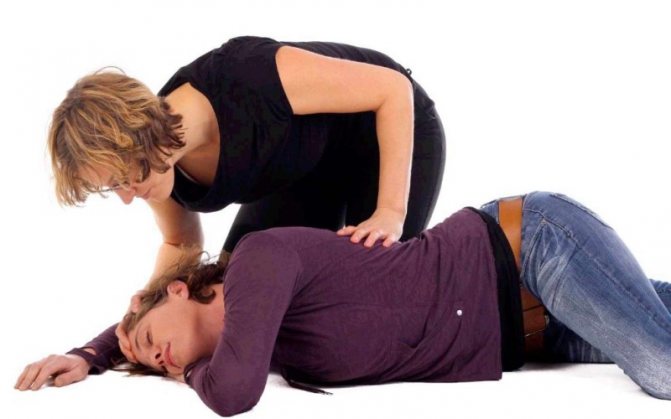
— Can convulsions be a companion to growth, that is, they occur in adolescence and go away over time?
— Of course, after all, during puberty (puberty is the period of puberty, usually 12-16 years for girls and 13-18 years for boys), the body undergoes restructuring, and it happens that it cannot cope with the stress. At this age, what is more common is not even convulsions, but convulsive fainting (pulling and going limp), as well as simply fainting - going limp and dripping like ice cream. They occur when there is strong excitement (boys are afraid of injections, for example). They happen from standing for a long time (girls faint at school assemblies on September 1).
” To exclude suspicion of some other disease, parents need to know that a person “enters” into fainting, and adolescents describe their condition quite clearly: there is a feeling of lightheadedness, dizziness, ringing in the ears or congestion.
If everything happens this way, then it will go away with age, but a consultation with a neurologist is, of course, mandatory. Parents just need to understand that fainting is not a reason to panic.
Febral seizures and respiratory arrest
Hello, Evgeniy Olegovich!
Thank you for the knowledge that you put into our parent heads!
Unfortunately, I will write about the sad thing - about the helplessness of adults when they do not know the rules of first aid.
Yesterday (03/17/2015) an incident occurred with my niece Varvara, who is 7.5 months old. The child was sick for the second day. Transparent snot, temperature 37.5-38.1, moodiness (popular diagnosis - “tooth teeth”).
12.00 -12.30. The doctor who arrived to the call found redness in the throat and was diagnosed with ARVI. Prescribed chlorophyllipt. They smeared it on the nipple and gave it to me.
Around 13.00. We took the temperature - 37.4, the baby feels fine.
Next I will try to describe the situation in a dry way, omitting the screams, hysterics, tears, terrible thoughts, panic...
13.46. The child sits in a high chair, plays. Mom and her friend are in the room. Suddenly the head begins to twitch, throws back a little, each twitch is accompanied by a quiet sound vaguely reminiscent of hiccups, the mouth is slightly open. The mother picks up the child in her arms. The child's position is face up, body at a slight angle (i.e., head slightly higher than feet).
13.47. Mother and child go out to the balcony. The convulsions continue.
13.50. An ambulance is called. The child’s aunt (me) comes running from the neighboring house. None of the three of us knows what it is or what to do. I try to examine the child's mouth for foreign objects or mucus in the throat. Although the gums are not closed and there is a distance of about 7-10 mm between them, nothing is visible. The jaw is fixed, i.e. I can't open it wider. I make a slight effort - it doesn’t work, I abandon this idea for fear of harm. As far as I can, I stick my finger (about 3 cm behind the gums) and examine the accessible area. There is nothing, but the language seems unusual to me - as if it is deeper than necessary and very tense. Thoughts about swallowing the tongue flash. I'm trying to somehow fix it, but it doesn't work. The convulsions continue, the position of the child’s body is the same. Everyone is on the balcony.
13.57. We call a pediatrician friend. She names 2 drugs that can be given orally. For some reason I object to her: “But how will we give them to her? What if you choke? And she won’t be able to swallow” (I describe the condition of the jaw and tongue). To which the answer is “Even if he doesn’t swallow, the medicine will be partially absorbed through the root of the tongue.” The named medications are not in the medicine cabinet (and somehow I even feel reassured that I won’t have to pour anything into my mouth). Then she offers to dissolve half a tablet of no-shpa. But they found a silo. I ground it into powder, filled it with water, and put it into a syringe without a needle (it turned out to be 2 ml). I didn’t see how they introduced it. I can only say that not all of the solution got into the child’s mouth, in total ¼-1/3 of the tablet.
Total: conversation with a doctor for 2 minutes + about a minute to find tablets and prepare a solution.
14.00 (approximately). They gave me this no-shpa. The convulsions continue. There is no ambulance.
Then it is difficult to navigate in time, but after about 2 minutes the convulsions stopped. We thought that no-spa helped. But before they even had time to rejoice, the child’s mother noticed that her lips had turned blue. Looking at the baby’s face, I was horrified - not only the lips were blue, but also the area around the mouth (nasolabial triangle, as it seems to be called). They pushed the mother and child out onto the balcony again. It seems to me that the baby made some kind of sound (maybe moaning, sobbing or noisy breathing), letting us know that she was alive. I was distracted by calling an ambulance to find out when they would be there. They answered - the brigade is on the way, expect it to arrive in 3 minutes.
14.05. Call from a mobile phone number. Emergency doctor. “We’ve arrived, now we’re near {names some landmark}, where next?” I understand that I don't understand anything. I ask: “What street are you on?” “Nemirovich-Danchenko,” he says. And we are on Danchenko Sergei! This is in another area of Kyiv! (It is worth noting here that when calling an ambulance, the operator of service 103 said that there is no Danchenko street in Kiev, but only Nemirovich-Danchenko in the Pechersky district. To this I answered her that there is a Danchenko street, that it is located in the Podolsky district, that This is a new street, it is no more than a year old, I named three neighboring streets for reference. There was an answer - okay, wait for the brigade.)
As the panic grew, it was further difficult to establish even approximately the time intervals and a 100% exact sequence.
At some point, the sister on the balcony shouted “Varya! Varya! Waaaarryaaaa!” There is horror and hopelessness in my voice... I jumped out onto the balcony. The sister screams and shakes the child. The baby's face is blue, her eyes are rolled back, she is limp (as I understand it, the sister screamed when the baby stopped making any sounds). I exhale into the child's mouth. I put my finger in my mouth, I understand that there is no space in the throat between the tongue and the palate, I try to press my tongue with my finger, again I exhale into my mouth (because I didn’t know how to breathe correctly, I breathed differently - sometimes only into my mouth, sometimes into my mouth and nose at the same time) . I don’t remember how many breaths there were, I don’t know how much time passed, it seems to me that it all happened quickly - 10-20 seconds, the girl began to cry.
What follows is a mess in my memory: I screamed from the balcony for help, called neighbors, trying to find doctors in the neighborhood, pressed my tongue with my finger, and periodically, at my sister’s request, breathed air into the baby when she stopped crying. Calls to the ambulance, we are approaching, we will be there in 5 minutes, I spoke with some online help, they said to maintain breathing by any means and call an ambulance (hmm, with this help operator 103 connected me).
14.30 – 14.35 (in this period). The ambulance has arrived. A curved plastic tube about 10 cm long was shoved into Varya’s mouth. More than half of it was sticking out of her mouth. The doctor ordered - sibazol (not sure) 2 cubes. At that moment, the child somehow ended up in my arms. While the doctors were rummaging through their suitcase, the tube fell out. I looked at the face and it seemed to me that the lips began to turn blue again. I inhaled. The doctor shouted, “Why did you take the tube out?” I say, “She fell out on her own, and it seems to me that the child is not breathing again.” “Oh, well then breathe, but not more than the volume of your mouth.” I say, “Maybe, instead of a straw, I can press my tongue with my finger so that it doesn’t block my throat?” “Yes,” he answers, “that’s even better.” Injected. They wrapped us in a blanket and drove off with flashing lights. We drove for about 10 minutes. During the journey, either the doctor or the sister asked me to breathe into the child’s mouth. It seemed pointless to me, but I did it. When I wasn't inhaling, I pressed my tongue. Halfway through, I realized that everything was fine with the tongue, and the little one was breathing evenly. I told the doctor about this, she replied that the medicine worked.
The hospital ruled out meningitis and encephalitis. A neurologist and resuscitator looked at me. It turned out that the child’s father also had febrile seizures in his family (his nephew and brother). They promised further examination. Today (03/18) the temperature rose to 38.4. Efferalgan did not help, they injected me with some antipyretic. They put in a saline drip. An antibiotic was prescribed - ceftriaxone (due to the fact that the temperature was difficult to control). I don’t know any specific details; I get information from my sister over the phone.
I understand that the events I described are partly subjective. That is why there are so many “it seems to me” in the story. I kindly ask you to comment on the situation described, our actions, recommendations and actions of doctors. Probably, from the outside it looks like a set of actions aimed at... well, certainly not helping...
PS Now I know well what febrile seizures are, how to provide first aid and what NOT to DO. Now I will learn (not read, but LEARN!) “Emergency Aid” by heart and force my husband and sister to do it. And I’ll even check! I'm not kidding - there will be an exam. I have two children of my own and I simply have to know!
PPS Danchenko Street can be easily found by taxi drivers and delivery services, but it is not in the database used by the operator of service 103.
PPPS An ambulance could have been called 3-4 minutes earlier if at least one of the two adult women with the child knew the number 103.
Another thousand thanks for your business!
Sincerely, Victoria (36 years old, Kyiv).
Signs and symptoms
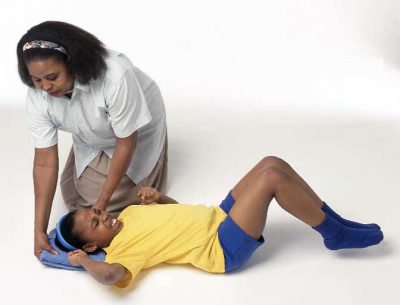
They do not last long and are involuntary asynchronous muscle contractions. Most often, seizures occur in the morning, after waking up.
Muscle contractions usually involve only the arms and shoulder girdle, but in some cases they spread to the legs or even the entire body.
During an attack, patients may drop or throw away objects they were holding in their hands. If the lower extremities are involved in a seizure, adolescents fall.
Rarely, patients present with myoclonic status epilepticus. The patient does not lose consciousness. In 3-5% of cases, the disease occurs with only myoclonic seizures.
3 years after the first attack, in the vast majority of cases, tonic-clonic seizures develop.
They begin with increasing myoclonic twitching, which turns into clonic-tonic convulsions. 40% of such patients experience absence seizures. They lose consciousness for a short period.
Primary seizure syndrome is epilepsy
At the same time, there is a hereditary predisposition to seizures, since a certain type of metabolism in the nerve cells of the brain is inherited, which reduces their threshold of excitability. This is the so-called convulsive readiness of the brain, which, in the event of unfavorable events, can result in a convulsive attack.
Epilepsy affects 1 to 5% of children, and the disease first appears in childhood in 70% of all affected adults. In addition to seizures, epilepsy can manifest itself as autonomic, mental or sensory disorders. Seizures at night are not typical for epilepsy.
Epilepsy is distinguished with focal or generalized seizures.
- Simple focal seizures are convulsions of individual muscle groups without loss of consciousness, complex seizures are convulsions with loss of consciousness.
- Generalized seizures may be accompanied by clonic, tonic-clonic, atonic or myoclonic seizures or petit mal seizures (absences).
- Status epilepticus is a prolonged epileptic seizure (about half an hour) or a series of convulsions with loss of consciousness. It can be triggered by electrolyte disturbances, infections, and medications. Often epistatus is the onset of a brain tumor.
Types and forms of the disease
Most often, patients experience the following forms of the disease:
- Juvenile absence epilepsy - begins with generalized seizures and then progresses to simple absence seizures. 10% of patients experience febrile seizures (with an increase in temperature).
Juvenile myoclonic epilepsy , or Janz syndrome, most often begins in adolescence. Patients experience muscle twitching in the shoulder girdle and arms. They can be barely noticeable or very pronounced. After some time, generalized convulsions may appear. Attacks occur from once a day to once every few weeks. A seizure can be triggered by feelings of anxiety, forced awakening, insomnia, and drinking alcohol. Juvenile myoclonic epilepsy is characterized by a high relapse rate.
With generalized seizures - occurs in adolescence, seizures occur from 1 time per week to 1 time per year. Sometimes the addition of myoclonic seizures or absences is observed.
- Catamenial epilepsy in girls. Characteristic only for girls. The appearance of epileptic seizures in teenage girls is associated with the phases of the menstrual cycle.
Predisposing factors for fever
The causes of febrile seizures in children lie in the disrupted functioning of the immature nervous system. Therefore, this phenomenon is typical only for children under 6 years of age - if spasms appear in adulthood or without a rise in temperature, then there is a high probability that they indicate epilepsy.
Convulsions at fever in a child are caused by the predominance of excitation processes over inhibition processes in brain cells. Such an imbalance gives rise to pathological nerve impulses and, as a result, involuntary muscle contraction. A spasmodic reaction is provoked by a body temperature above 38 ºC, which has risen due to a cold, ARVI, infection or vaccination.
Diagnostics
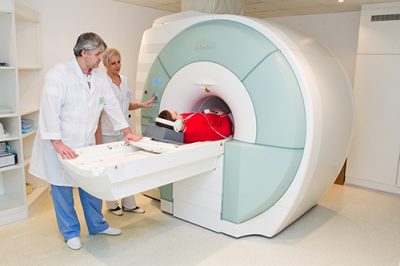
To confirm the diagnosis, it is necessary to undergo a thorough examination.
The child must be shown to a neurologist immediately after the first seizures appear. The specialist prescribes:
Treatment regimen
Patients should, if possible, avoid situations that can provoke attacks:
- violations of the regime;
- excessive physical and mental overload;
- lack of sleep;
- stressful situations;
- drinking alcoholic beverages.
Many families with sick children move to live in the countryside, because a quiet life, fresh air, and nature have a beneficial effect on teenagers.
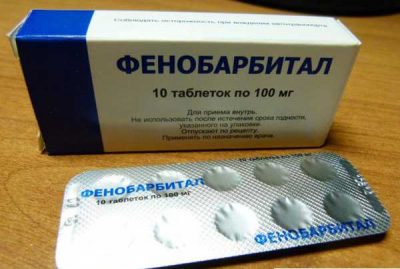
Patients are prescribed valproate. These medications can cope with any type of juvenile epilepsy.
If monotherapy is not enough, the doctor prescribes a combination treatment:
- to relieve resistant absence seizures, valproate is combined with ethosuximide;
- To relieve resistant clonic-tonic attacks, valproate is combined with Phenobarbital or Primidone.
To keep myoclonic seizures under control, Clonazepam is needed, but when they are completely stopped, the patient cannot sense in advance that he is about to have a seizure, since there are no myoclonic manifestations.
Because of this, Clonazepam is prescribed only in the presence of persistent myoclonic paroxysms. It must be combined with the drug Valproic acid.
New generation drugs, which include Topiramate, Lamotrigine, Levetiracetam, are currently being tested in clinical settings. The high effectiveness of Levetiracetam has already been noted, so this drug is considered promising.
Prognosis and prevention
Adolescent epilepsy is considered a chronic disease. Spontaneous remission is rare. In 90% of patients who interrupted treatment, epileptic attacks return, but in some cases a long period of remission is observed.
When proper treatment is prescribed, in 80% of cases it is possible to completely rid the patient of seizures. The drugs are discontinued gradually over several years. This is done in order to completely eliminate relapse.

Juvenile epilepsy does not affect mental abilities in any way, so there is no need to worry about the child’s development.
Prevention consists of taking actions to prevent the occurrence of epileptic seizures.
This requires:
- Timely diagnosis of chromosomal syndromes and various hereditary diseases.
- Careful examination of pregnant women who are at high risk of giving birth to a child suffering from epilepsy. Most often this applies to women who take drugs and suffer from endocrine disorders.
- Observation of children who were underweight at birth or had other deviations from the norm.
- Conducting social events for patients with juvenile epilepsy.
Timely, competent diagnosis increases the chance that treatment will be effective. At the first suspicion of epilepsy, a child should be shown to a doctor.
He will develop an individual treatment plan. Its strict adherence guarantees a cure in most cases, so there is no need to despair.
About epilepsy in adolescents in this video:
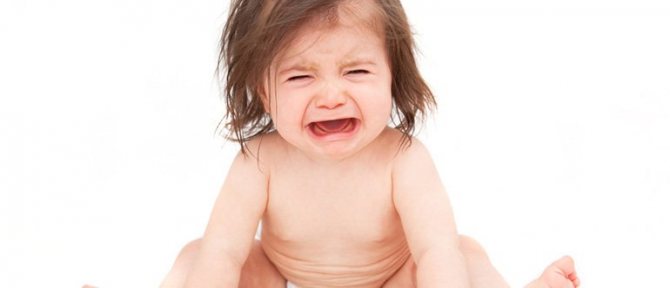
Pediatricians systematically encounter neurological problems in children. They manifest themselves primarily by muscle contraction. The range of causes of these pathologies is very wide.
Cramps are a sudden (paroxysmal) involuntary contraction of muscle fibers in combination with pain. A spasm of the muscle mass causes a short-term distortion of the shape of the limb.
For a child, such attacks are dangerous with a high risk of injury, as the baby loses balance due to severe pain. A leg cramp can go higher and develop into a generalized form. Such convulsions increase the risk of respiratory arrest or brain swelling.
Regular muscle spasms are a symptom of a serious pathology, so they cannot be ignored!
Causes of epilepsy in adolescents
During adolescence, a person experiences many sensations that he has not encountered before. Lifestyle changes, many new interests, first love and sexual relationships appear.
At this time, a person tries a lot of new things, and his body experiences serious stress.
Epilepsy, the causes of which can appear suddenly and unexpectedly in adolescents, can disrupt this “immersion” in adult life, create complexes and limit the child’s socialization.
Features in teenagers
The disease occurs in childhood, and most cases occur in adolescence. In rare circumstances, hereditary epilepsy due to concomitant causes manifests itself at the age of 20 years. The first seizures begin at 11–16 years of age, but in rare cases they occur for the first time only at 17–19 years of age.
Epilepsy in adolescents is considered a chronic lesion of the central nervous system and brain. It differs from the adult form in the severity of its course.
Thus, children's “falling sickness” is often not accompanied by deep fainting or convulsions.
The attacks go unnoticed, or are more like a nervous breakdown. Even at a young age - up to 11 years - parents are practically unable to notice this pathology.
At school, the disease begins to make itself felt: it is difficult for the child to concentrate, and he begins to lag behind in his studies.
Causes of epilepsy
The causes of epilepsy in adolescents are associated with pathological functioning of neurons. Due to the spread of impulses across both hemispheres, seizures occur. Parocrises - convulsive seizures - occur between the ages of 11 and 17, and become more intense in adulthood.
In some cases, epilepsy goes away with age, especially in mild cases.
For reasons in adolescents, the disease is divided into 3 degrees:
- Idiopathic . Teenage epilepsy is passed on from parents.
- Secondary . Occurs as a symptom of complications after severe infections and injuries affecting the brain or nervous system. Sometimes it develops due to neoplasms.
- Cryptogenic . The diagnosis is made if no other obvious causes are found.
Cells begin to work incorrectly due to external factors and internal characteristics of adolescence. So, the impetus can be hormonal changes. And sometimes the cause is a failure that occurred during intensive development.
The psychological and emotional state of the child is no less important. The cause of epilepsy in adolescence can be severe stress caused by an unfavorable atmosphere in the family or excessive stress placed on the teenager. Sometimes the cause is teenage quarrels . Other reasons:
- trauma – mainly as a result of severe TBI, epilepsy attacks develop (including several years after the injury);
- organ diseases, including infantile paralysis, vascular pathologies in the brain;
- metabolic problems - in 10% of cases, adolescents have congenital or acquired pathologies (diabetes, lead poisoning, obesity due to abuse of unhealthy foods).
The disease can also be triggered by long-term exposure to toxic substances, including medications and drugs.
Forms of the disease
There are different forms of epilepsy in adolescents, but they are all different from adult types.
| Type of disease | Peculiarities |
| Juvenile absence epilepsy | It is characterized by generalized muscle contractions, gradually turning into absence seizures. As the temperature rises, febrile seizures begin |
| Juvenile myoclonic form (constant relapses and development due to insomnia, forced awakening, alcohol intake) | The disease begins with small muscle twitching in the shoulder girdle, after some time generalized convulsions develop, and the frequency of attacks can reach 1 time per day |
| Form with generalized seizures | Seizures may appear once a year, but there are cases when the disease occurs every week |
| Catamenial epilepsy (occurs in girls) | Seizures depend on the phase of the menstrual cycle |
The severity of the symptoms of epilepsy in a child, as well as treatment methods, depend on the type of disease.
Symptoms of the disease
The main symptom of the pathology, by which epilepsy can be accurately identified, is a seizure. In adolescence, they differ in the following points:
- there is a feeling of a sharp blow in the area under the knee, which causes the need to sit down, in some cases the child falls to the ground;
- symmetrical convulsions appear, during which a person bends and straightens his arms and legs;
- sharp muscle contractions cause a person to drop or involuntarily throw objects.
Indirect signs of pathology can be identified, which are often detected at the age of 10-11 years. Many of the symptoms are related to sleep: sleepwalking, screaming during sleep, nightmares.
The child suffers from headaches that occur frequently and out of nowhere, often accompanied by bouts of vomiting. Speech is impaired in adolescents. Aggression gradually appears. After diagnosis, a person becomes withdrawn and tends to ignore medical and parental recommendations.
Localization of the focus of epilepsy: focal seizures
Focal seizures begin from a specific point and do not involve the entire cortex. Depending on the place where the pathology begins, the symptoms differ:
Develops in most cases of focal seizures. Affects the emotions, memory and feelings of a teenager. Symptoms such as sudden changes in mood and strange thoughts or emotions appear. The child becomes anxious and does not understand what is happening.
Symptoms of seizures depend on the area of the frontal lobe that is involved in the pathology. Sudden convulsions occur and pass quickly enough.
There is marked weakness in the muscles, including those responsible for speech. Often attacks begin in a dream: the child rushes about uncontrollably, turns his head, moves his legs.
Due to the large size of the frontal lobe, sometimes symptoms cannot be identified (they are believed to be hidden).
Most of the symptoms affect human sensory receptors. In a teenager, epilepsy manifests itself as mixed sensations in different areas of the body: sudden warmth, tingling, an imaginary change in body size, partial numbness.
The least common form of adolescent epilepsy, which may cause changes in vision. The child experiences flashes of colors before the eyes, black dots, patterns, or images. Also with this form there is a flickering sensation, which causes a feeling of nausea.
Some children experience partial blindness at the time of the attack, uncontrolled eye movement, and painful sensations on the eyelids. When the attack lasts for a long time, severe headaches develop.
There is a second form of attacks, which are extensive and manifest with severe symptoms.
Generalized seizures
Generalized seizures are so called because in epilepsy all parts of the brain are affected by the improper action of neurons. In 100% of cases, the person loses consciousness or is in a semi-fainting state, cannot think soberly and cannot stand on his feet.
There are mild generalized seizures, in which a person is in this state for less than 5 seconds, which is why they can be missed.
Sometimes epileptic seizures begin as focal ones, but can develop into generalized ones. They can be identified by special beacons indicating loss of consciousness. To avoid injury, a person must sit comfortably. Types of seizures:
- Tonic-clonic. It begins with an acute phase, accompanied by a cry due to spasms of the muscles responsible for contracting the gap. Air escapes from the larynx, and convulsions of the limbs occur. They run out in a few minutes. The person may experience severe drowsiness and confusion. Almost always, a teenager needs rest after an attack. If a seizure lasts longer than 5 minutes, emergency medical assistance is needed.
- Absence epilepsy . With this type of attack, a complete loss of consciousness occurs, but the teenager’s eyes remain open. Lasts no more than 10-15 seconds, in this state the person does not react in any way to external stimuli. Then there is a return to normal.
Sometimes people don't even notice such seizures. The complexity of the absence form is due to the fact that a person without a medical education cannot diagnose it or notice the first signs. This condition in adolescents with epilepsy is often confused with thoughtfulness. One of the signs can be considered a sudden interruption mid-sentence during a story.
- Myoclonic form . Epilepsy in adolescents of the myoclonic type often develops after sleep or before going to bed at night. Accompanied by a short-term loss of consciousness, but often goes unnoticed.
- Tonic seizures . They are less common than other forms, mainly in patients with Lennox-Gastaut syndrome. During such an attack, the muscles become very elastic from tension, there is a high risk of falling, and slight loss of consciousness.
- Atonic attacks . With this form of pathology, muscle tone is greatly reduced, as a result of which the teenager may fall to the ground. Loss of consciousness is short-lived. If a person is lying down or sitting, a seizure may be missed. At the age of 11-12 years, a child may experience a symptom such as a thrown back head.
Despite the fact that epilepsy in adolescence most often occurs in a mild form, many parents fear that the disease may affect the development of their child.
Features of the life of a teenager with a disease
A child with epilepsy, like an adult, can suffer from relapses and also go into long-term remissions. Sometimes there is a general deterioration in health. In some cases, epilepsy goes away on its own within a few months or years, and the child does not even need to take medications.
But there are severe forms, in which the number of attacks is constantly growing, from mild forms they flow into generalized seizures with acute symptoms. The prevalence of such seizures in children aged 12 to 19 years is up to 24 people per 100,000.
Peculiarities of adolescent behavior
A child with epilepsy, especially if the symptoms are acute, may experience emotional and psychological problems. The disease greatly affects the well-being and comfort of the child.
A syndrome of instability of personality formation is often observed: children violate the prohibitions of doctors and parents, begin to drink alcohol, only aggravating the situation, engage in dangerous sports, and ignore taking anticonvulsants.
In other cases, the opposite of rebellion, teenagers find themselves in forced social isolation, feeling abandoned and insecure. There is also unnecessary pressure from parents in the form of overprotection.
Preparing for diagnosis: what parents should remember
If epilepsy is suspected in a teenager, parents can prepare for the diagnosis so that it is more effective:
- you need to tell the neurologist when the seizures started;
- describe the seizures in detail: the position of the arms, legs, body and head, the condition of the pupils and skin color, duration;
- the specifics of the course of the attack - sharply or with an aura (preceding sensations);
- time of occurrence of the first seizures;
- what are the provoking factors: stress, temperature, menstrual cycle in girls, computer work;
- the child's behavior before the seizure.
After visiting a neurologist, they will prescribe electroencephalography of the brain, MRI and CT, as well as mandatory blood, stool and urine tests. Sometimes a cerebrospinal fluid test is needed to rule out other diseases.
Forecast
Treatment of epilepsy in adolescents and its causes comes down to complex therapy, which is calculated individually in each case. This necessarily includes taking anticonvulsants (usually one medicine).
Spontaneous remission after treatment occurs only in 10% of cases . In 90% of patients who interrupt therapy, the disease recurs. Periods of remission up to several years are possible. If therapy is prescribed correctly, then a teenager is relieved of seizures in 80% of cases. Mild and moderate epilepsy does not affect mental abilities in any way.
Timely detection of epilepsy helps in effective treatment. The longer the disease remains unattended, the higher the risk of increasing symptoms and deterioration of the child’s well-being.
Causes of seizures in children

The etiology of convulsions is varied. The reasons why a child’s legs cramp are divided into primary and secondary. Pediatricians recognize nervous disorders as the main factor in the appearance of this symptom.
Primary
These reasons directly affect muscle tone and trophism:
- Excessive physical activity.
Children are very active during the day. Since their musculoskeletal system is still weak, muscle overstrain is possible. An excess amount of lactic acid is synthesized, which is the cause of the spasm.
A foot can also become cramped from walking in uncomfortable shoes or from excess weight.
When the shape of the foot changes, its system of distributing the load on the bones, joints and ligaments of the foot is disrupted. This leads to their fatigue. The result is muscle cramps in the feet, legs and even fingers.
- Ischemia (oxygen starvation) of limb tissues.
The causes of leg cramps in a child can be: atherosclerosis, thrombosis, embolism, other disorders in the blood vessels, or a long-term uncomfortable position in which the arteries are pinched.
Secondary
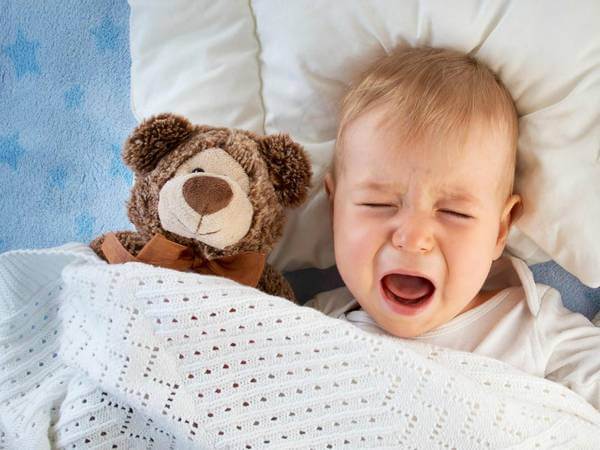
Certain diseases indirectly affect muscle tissue, causing cramps:
- Imbalance of micronutrient metabolism.
- Magnesium and calcium are involved in the process of myocyte contraction; their deficiency is associated with poor nutrition or hormonal disease.
- Iron is an essential component for hemoglobin, which carries oxygen. Iron deficiency will lead to anemia, which will lead to ischemia and seizures.
Anemia (“anemia”) is a disease characterized by low hemoglobin levels.
- Lack of vitamins.
Mainly in infants. Muscles require minerals and vitamins to function. With a lack of the latter, the threshold of excitability of myocytes decreases, which leads to their contraction even with a weak nerve impulse. The result is seizures.
Glucose is used by cells as an energy substrate for all processes in the body. Its deficiency (diet, diabetes, pancreatic cancer) leads to myocyte dysfunction.
- Irritation of the motor areas of the central nervous system.
Causes: neuroinfections (complications of acute respiratory viral infections, acute respiratory infections), stroke, alcohol or drug poisoning (toxic effect on the nerve fiber sheath), pinched peripheral nerve (spinal pathologies, fractures).
Frequent stress and emotional overstrain disrupts the functioning of neurons.
- Sudden changes in body temperature.
Young children experience convulsions during fever (ARVI) or as a result of sunstroke. The reason is a violation of adequate blood supply to the peripheral nerves and brain.
Cases of drowning due to leg cramps often occur when swimming in cold water.
Joints hurt - what to do?
We have studied a huge amount of materials and, most importantly, tested most of the remedies for treating joints in practice. So, it turned out that the only drug that does not relieve symptoms, but truly cures it, is Sustalife.
So that you don’t think that they are selling you another “miracle”, we will not describe what an effective drug it is... If you are interested, read all the information about Sustalife yourself. Here is the link to the interview.
Cramps in the legs of a child occur primarily at night. Most often it cramps the calf muscles.
Mostly convulsions are short-lived, up to a few seconds. With a longer period, suspicions of serious neurological pathology arise.
What do seizures indicate?
Muscle spasms are indicators of the presence of various pathologies in the body:
- Flat feet.
- Lack of microelements or vitamins.
- Diseases of the central nervous system or a genetic predisposition to their development.
- Uncomfortable position of the legs for sleeping or hypothermia of the child at night.
- Sunstroke or very high temperature due to an infectious disease.
First aid for leg and body cramps
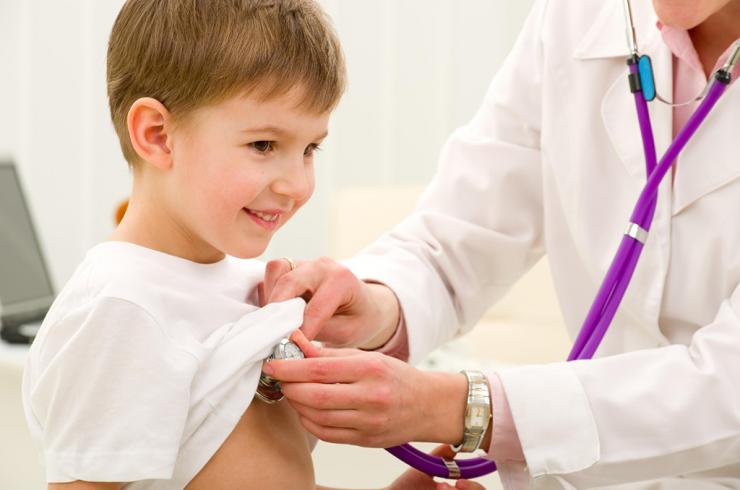
In case of convulsions throughout the entire muscular frame, similar to an epileptic attack, an adult needs to pull himself together, calm down and follow the instructions:
- Call an ambulance.
- The child must be placed on a flat, soft surface.
- Unbutton the patient's clothing that restricts movement and breathing.
- Provide access to fresh air: take the child outside or open a window.
- Wrap a knotted napkin, medical spatula, spoon handle (or other available items) with cotton wool or a bandage. Place the resulting bag between your molars. For these purposes, you can use a soft rag or towel.
This manipulation will help avoid injury to the oral cavity.
Do not insert metal objects between your teeth without wrapping them in something soft. Anything harder than enamel will damage it.
- Wait for the ambulance to arrive.
Next comes the medical tactics:
- Intravenous injection of anticonvulsants or tranquilizers.
- Oxygen therapy.
A local spasm can develop into a generalized form, seizing the muscles of the respiratory system. To alleviate the condition and maintain consciousness, the required level of oxygen is artificially maintained.
- Writing out a referral to see a neurologist or hospitalization in the neurological department to identify the causes of the disease and draw up a treatment plan.
With localized spasm of an individual muscle or limb, the tactics change. Most often, a child's calf muscle is affected by a cramp.
In such a situation, the following algorithm of actions:
- Ask the baby to pull the sock. If this is not possible, then help straighten the foot. The muscle will stretch, causing short-term pain, after which the cramp will go away. If the condition does not improve, then the action is repeated until the muscles relax.
- Ask the child to walk around to improve tissue blood flow. Ischemia (oxygen starvation) will pass and muscle relaxation will occur.
- To improve blood supply, you can use a leg massage or heat: apply a heating pad or take a warm bath.
Convulsions at high temperatures in children. What to do? Emergency first aid
If a convulsive attack occurs against the background of a high temperature, it may go away on its own, but you must definitely call an ambulance.
Your actions before the doctor arrives:
- It is necessary to free the baby's neck and chest from clothing so that his breathing does not become difficult,
- Then lay him on a barrel on a flat surface, placing something under his head. Ventilate the room. If a child is vomiting, make sure that he does not choke on the vomit.
- If the attack ends before the ambulance arrives, it is urgent to cool the child’s skin , for example, wipe the armpits, groin folds, elbows and knees with a cold damp towel.
- Be sure to give an antipyretic to prevent the attack from happening again.
- Carefully describe the picture of the seizures , when the doctor arrives and examines the child, note the time of the seizures. Mom usually has no time for this. Ask if there is someone nearby to help you with this. To any mom, it seems like cramps that lasted 30 seconds for an eternity...
Children susceptible to febrile convulsions must be constantly monitored during any infectious disease ; they should not be left unattended and their temperature should not be allowed to rise above 37.5 degrees .
What is important for parents to know?
Such children are contraindicated:
- any overheating
- you can't take them to the steam room
- leave in the open sun
- and in a stuffy hot room.
I suggest watching a video from doctors about febrile seizures in children.
Treatment of seizures in children
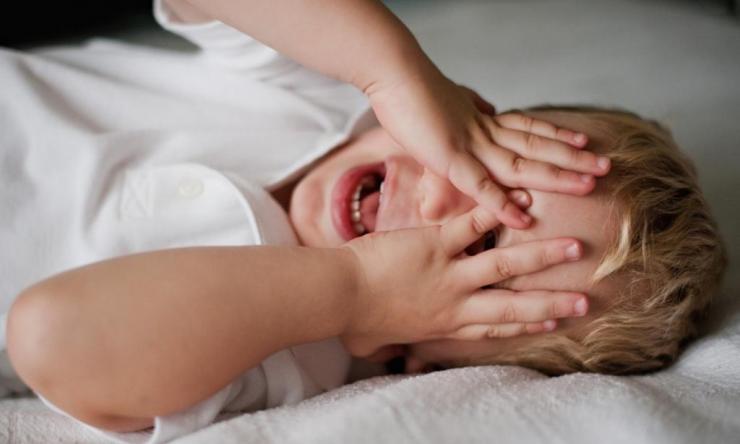
Single attacks of convulsions are usually not associated with serious pathology. When a child experiences muscle spasms regularly, it is necessary to immediately visit a pediatrician. The doctor will most likely refer the little patient to a neurologist.
How to treat seizures depends on the etiology:
- Anticonvulsants: diazepam, lorazepam, clonazepam and other benzodiazepine derivatives.
- For excessive pain, anesthetics (sodium hydroxybutyrate).
- To prevent cerebral edema - a diuretic (mannitol, furosemide).
- For metabolic disorders - intravenous administration of solutions of glucose, calcium, magnesium, potassium.
- To stop an attack, use anticonvulsants: phenobarbital, seduxen.
- In order to eliminate hypovitaminosis - intravenous administration of B vitamins.
- If the child’s condition worsens, artificial ventilation is required.
- Muscle relaxants.
- If it's hot, lower the temperature.
- If a child has convulsions of unknown or infectious origin, then he must be hospitalized for assistance and diagnosis.
The listed drugs have a large number of contraindications and complications. A doctor's consultation is required. Taking them on your own is strictly PROHIBITED!
Classification of seizures
Leg cramps in a child are muscle contractions that occur independently and are not controlled by the nervous system. Sometimes spasms occur with the participation of the brain. They are caused by neurological diseases or complications of chronic pathologies that affect the functioning of the cerebral cortex. Regardless of the mechanism of development, several types of seizures are distinguished:
- Clonic is a kind of muscle twitching. The episode can last several minutes, during which constant contractions of individual muscle fibers are observed. Such attacks are often characterized by convulsions in babies under one year of age, which appear as a result of age-related formation of the musculoskeletal system,
- Tonic cramps - look like prolonged muscle tension without episodes of relaxation. Felt in one muscle group - calf, sole, back of the thigh. Such an attack lasts several minutes, is accompanied by immobilization of part of the limb and the occurrence of pain,
- Mixed - such an episode lasts several minutes; tonic and clonic spasms may be observed, replacing each other. Scientists have not fully understood the mechanism for the development of such a symptom; usually these are febrile convulsions that appear against the background of an increase in temperature.
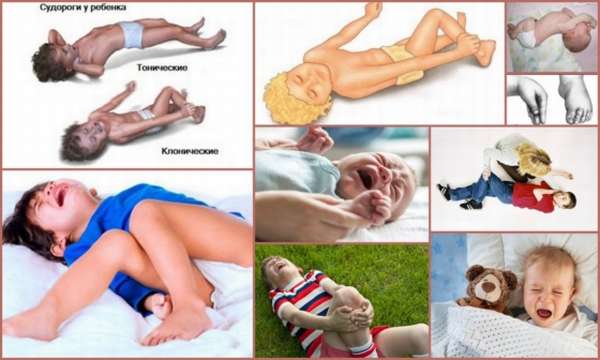
Based on localization, there are two types of seizures in children:
- Local - concentrated within one muscle, sometimes affecting neighboring muscles. Such contractions accompany convulsions in adolescents against the background of a deficiency of potassium and magnesium in the growing body; they often occur with fever, dehydration and other conditions,
- Generalized are spasms of the whole body, alternating with widespread tonic contractions and convulsions of the type of mixed convulsions. Observed in epilepsy, they can lead to injury during an attack.
What to do if a child has seizures? Before starting therapy, it is necessary to establish their type. Local spasms are easily eliminated by taking potassium and magnesium containing drugs. With generalized variants, such means are powerless. In such a situation, an examination by a neurologist and the prescription of special anticonvulsants will be required.
Physiotherapy
Physiotherapeutic treatment is indicated only as prescribed by a doctor. The safest methods are:
- UVT (ultrawave therapy),
- Magnetotherapy,
- Warming procedures.
Physiotherapeutic treatment is effective only in the presence of somatic pathologies that cause seizures. It is carried out twice a week, the child undergoes a routine examination at the request of the pediatrician.
Causes of seizures without fever
This is the largest group of provoking factors that affect blood vessels and nerves - they can be congenital or acquired. They contribute to the appearance of symptoms in both babies and older children.
The main causes of seizures in a child without fever are as follows:
- Mental instability
- Heredity,
- Birth injuries
- Circulatory and metabolic disorders,
- Dehydration,
- Lack of vitamins and microelements,
- Acquired diseases.
If a child has an infection accompanied by a fever, convulsions may occur with fever. In this case, temporary disturbances in the physiology of the cerebral cortex appear, which sends impulses to the muscles.
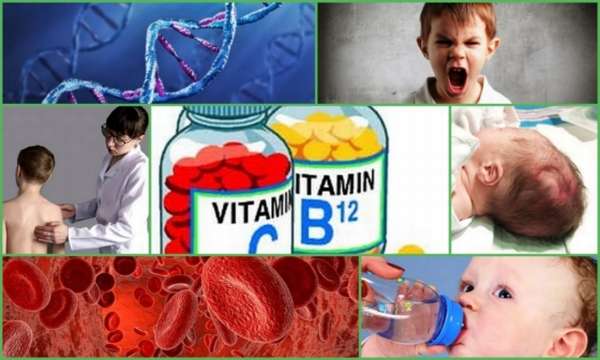
- Loose stools
- Blood loss
- Fever and high fever, accompanied by increased fluid consumption.
Febrile
This type of seizure is characteristic only of children and only at a strictly defined age - up to 5-6 years. Muscle spasms develop against the background of high temperature during any infectious or non-infectious disease. Children from 6 months to one and a half years are most susceptible to such seizures. Under the same conditions, at the same temperature, muscle spasms develop in only 5% of children, but the probability of their recurrence during a subsequent illness with high fever is 30%.
Seizures can develop against the background of acute respiratory viral infections and influenza, during the eruption of baby teeth, with severe allergies, and even during a reaction to the DTP vaccine. It is impossible to influence their development; neither antipyretic drugs nor constant temperature control reduce the likelihood of such an outcome.
It all starts about a day after the feverish state is established. Both simple convulsions, which are expressed by trembling of individual limbs, and complex ones, which involve large groups of muscles, the child loses consciousness. Actually, this is the first sign of a febrile attack. First, it “brings together” the legs, then the body and arms. The chin is tilted back due to strong tension in the occipital muscle, and the face becomes tense. The skin turns blue, sweating increases, and possibly increased salivation.
During an attack, short-term pauses in breathing may occur . After the peak has passed, the symptoms develop in the opposite direction - the back and face relax first, the legs last. After this, consciousness returns. The child is weak, after a seizure he really wants to sleep.
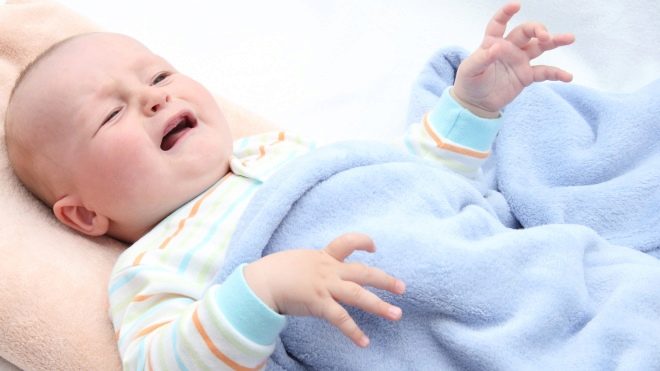
Traumatic brain injuries
Seizures after a skull injury or intracranial injury can develop either immediately or several days after the incident. Muscle spasms themselves are not a necessary consequence of a traumatic brain injury; their nature and severity depend on the type of injury received and how serious the injury is. Parents should be alert to changes in the child’s behavior and condition – lethargy, apathy, severe headaches, nausea and vomiting, loss of consciousness.
At the first symptom of seizures (and they can be of any type - from focal to generalized), you should immediately call an ambulance and provide emergency assistance yourself.

